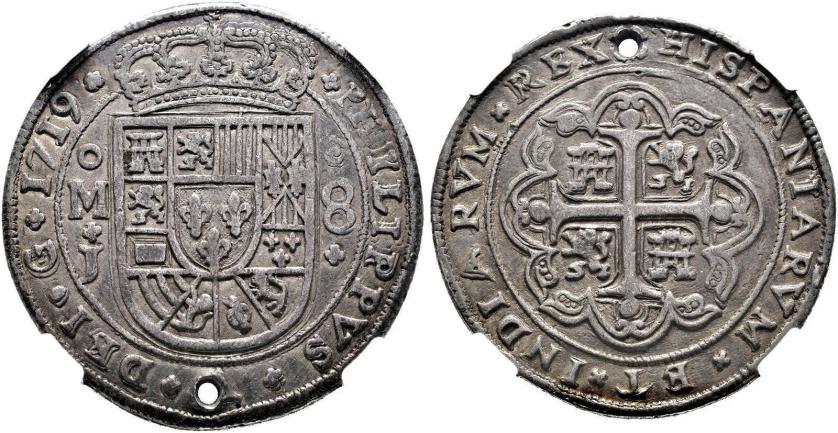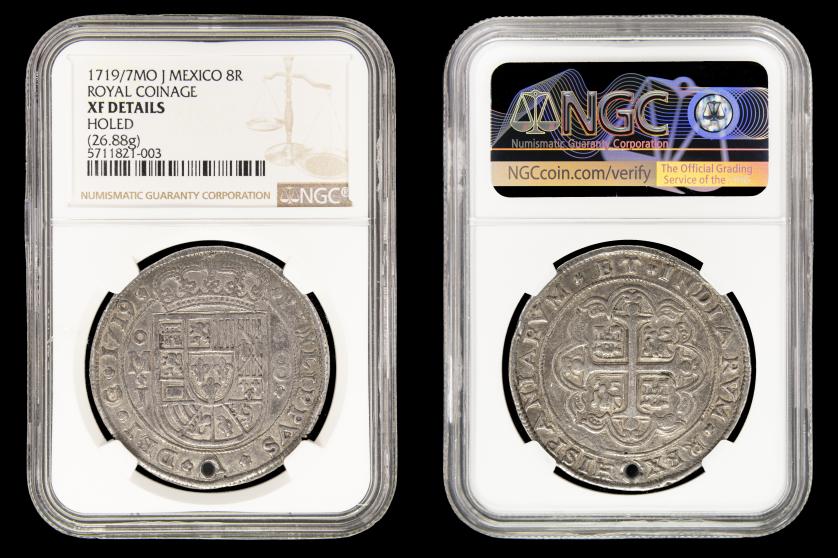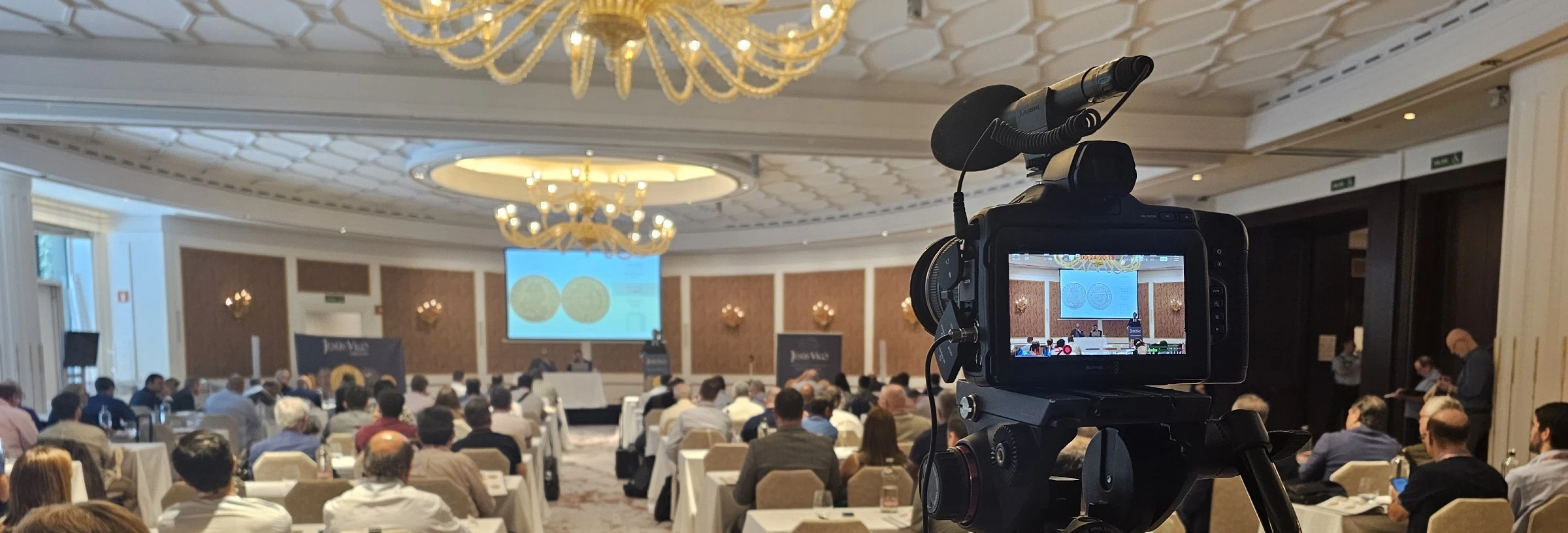Lot 279
Auction date
26-06-2024 15:00 CET
Finalized
Starting price 45.000 €
SOLD BY 45.000 €
PHILIP V
PHILIP V. 8 reales. 1719. Mexico. Redondo. AR 26.88 g. VI-1121; AC-1371. Encapsulated by NGC XF Details. Hole. Extremely rare: only two items known.
Categories
NumismáticaThese high-quality pieces were often used as personal adornments, hence the presence of the hole. They were likely commissioned by specific merchants who believed these prestigious pieces would find a significant market among the affluent classes, bringing them additional profits. Indeed, this proved true, especially with the value of the real de a ocho, like the one we see here. Minted by assayer José Eustaquio de León y Losa (J) during the viceroyalty of the Marquis of Valero (1716-1722), who managed to strengthen its borders by founding the city of San Antonio de Béjar in Texas (1718) and establishing the Capuchin Convent of the Indies (Corpus Christi) in Mexico City. During this period, Philip V sought to reclaim lost territories from the Utrecht treaties. Spanish troops seized Sardinia in 1717 and invaded Sicily in 1718, prompting the formation of the Quadruple Alliance (France, Great Britain, the United Provinces of the Netherlands and Austria), which declared war against Spain. Consequently, French settlers invaded Pensacola in 1719, but the viceroy forced their surrender and expelled the French from Hispaniola. Philip V, who was ultimately defeated militarily, had to dismiss his prime minister, Cardinal Alberoni, and confirm the territorial distribution agreed upon in Utrecht (1720). However, he retained the gains achieved by Viceroy Valero, who would later be appointed Duke of Arion (1725).
Recomended lots
Confirm your maximum bid
You are bidding for €
At the time of auction we will contact you by phone:
Confirm your maximum bid
You are bidding for
€
Loading…
Conecting with the server
Are you sure you want to buy the lot?
Confirm your maximum bid
You are bidding for
€



